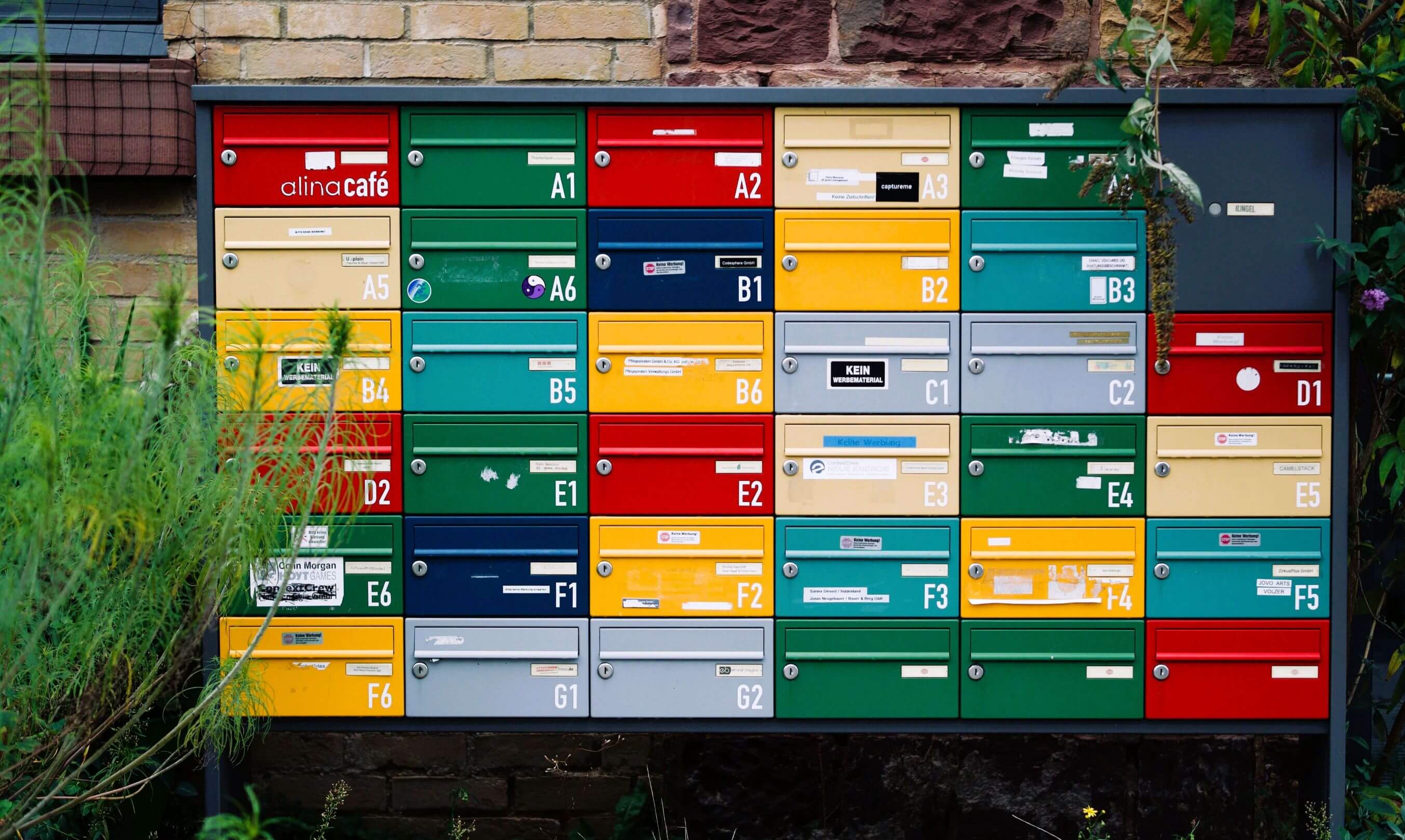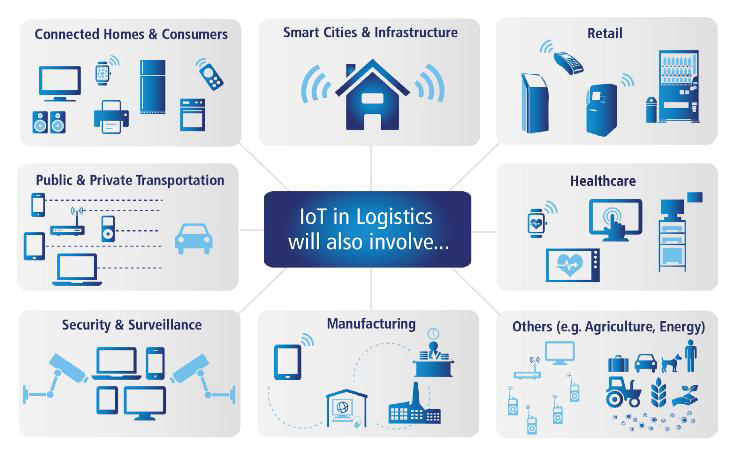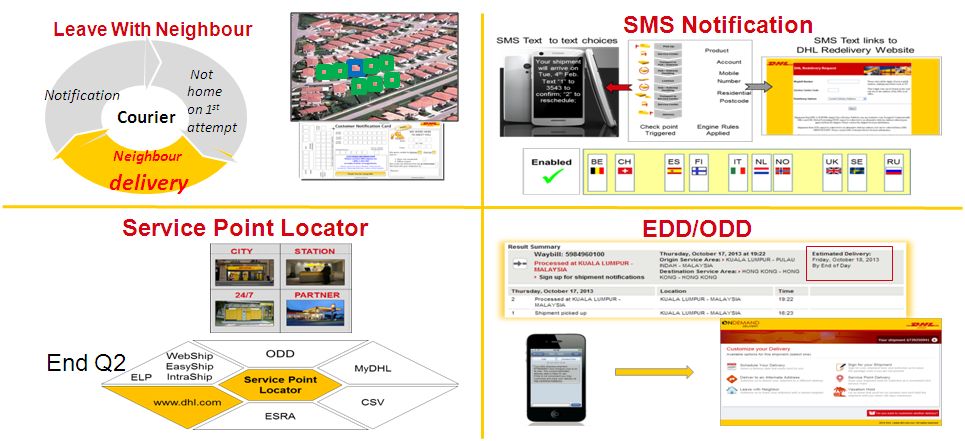- Home ›
- Digital Post Services ›
- Global Postal Network
Global Postal Network
Global postal network for the digital age facilitates the global delivery of postal items up to 30 kg

At A Glance
- The 26th UPU Congress held in Istanbul in 2016 launched the digital global postal network.
- Having already extended postal service provision into the internet with its Top Level Domain .post, the UPU has now developed, tested, and begun implementing the building blocks needed to centrally administer all transactions and facilitate the efficient, high quality and open global delivery of postal items (physical documents & goods) up to 30 KG, between all the world’s citizens.
Over the past decade, the global postal network has shifted from an analogue to a digital base. This mirrors changes in the commercial world, with business increasingly relying on real-time connectivity.
The Universal Postal Union (UPU) is a specialised agency of the United Nations and its task is to regulate the universal postal service. Its members are governmental and non-governmental postal administrations, officially designated by each member state and entrusted with operating postal services and fulfilling the obligations arising from the Acts of the Union within their own territories.
The UPU is the central institution deemed trustworthy to handle all necessary transactions, and to ensure efficient and accessible universal postal services are available for all the world’s citizens.
Growing ecommerce demands new postal products
Over the past decade, all postal administrations have faced fundamental changes in their operating environment.
Transactional mail volumes in developed countries are falling sharply, even disappearing in some countries as a consequence of electronic substitution.
In contrast, domestic, and increasingly
cross-border ecommerce has brought double-digit
growth rates to operators with sustainable last mile delivery networks in
their postal territories.
Ecommerce has enhanced the need for postal administrations to interconnect globally. It has also brought a fundamental change in the type of services needed in a global postal network. The UPU has recognised this, responding by introducing its Integrated Product Plan (IPP):
- From letter post items which are predominantly designed to facilitate the cross-border exchange of analogue documents – any piece of written, drawn, printed or digital information, excluding objects of merchandise
- To postal items containing goods – any tangible and movable object other than money, including objects of merchandise, which does not fall under the definition of "document".
These changes have, in turn, redefined the role of the UPU: formerly setting the regulatory and legal framework conditions for the global postal network, it now facilitates the digital infrastructure needed to exchange items cross-border, at marginal cost.
Today close to 80% of all mandatory standards describing the technical and service-oriented postal operational infrastructure needed to exchange items are data-related, and directly linked to platforms and applications governed and administered by the UPU and their Postal Technology Centre.
The role of the UPU is changing
The UPU is extending its reach, facilitating operational infrastructure at marginal cost for the postal administrations designated by its member states, enabling them to exchange commercial items within a dedicated network.
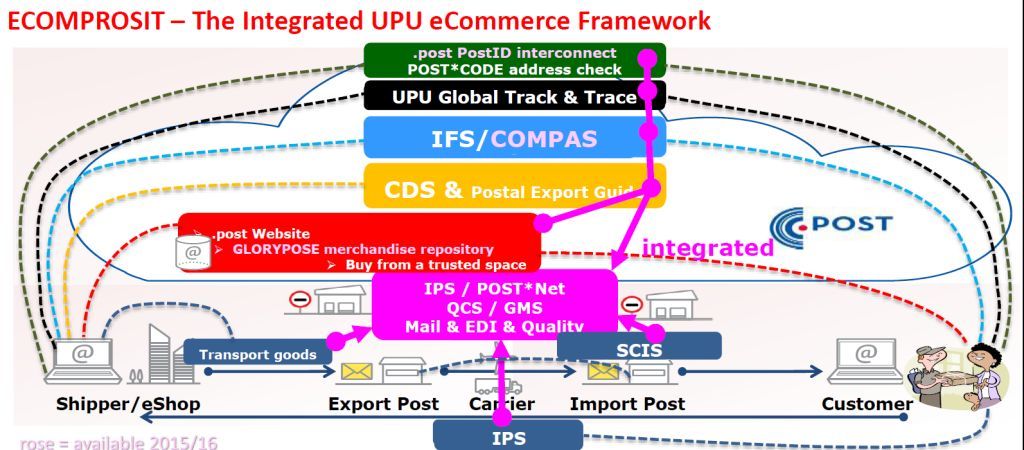
Fig. 1: UPU’s Postal Technology Centre facilitates a variety of applications enabling postal administrations to provide digital services for a global market
However, currently courier, express and postal operators not designated by the member countries of the UPU are excluded from this network.
Having made the shift from letter post items to commercial letter and parcel post items with its Integrated Product Plan, the UPU’s next step is to set out the path to a fully integrated, data-driven, highly interconnected infrastructure.
This is the aim of the 26th UPU Congress being held in Istanbul later this year.
The UPU will emerge as the facilitator for all its operational postal members, each responsible for its own postal territory, and connected via a single digital global postal network for cross-border item delivery.
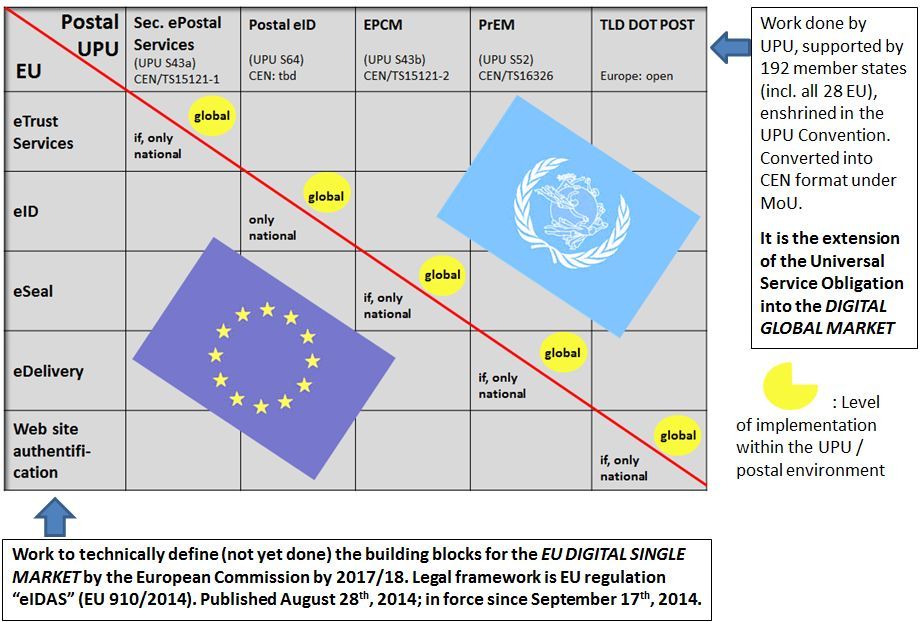
Fig. 2: While the EU has created the legal framework for the building blocks needed in a EU Digital Single Market, the UPU has already implemented the global standards necessary for the digital global postal network
The UPU has been designing and developing the building blocks for the digital infrastructure for the past 15 years. It is therefore no surprise that the following are all well described and documented:
- Digital communication
- E-delivery
- E-identification
- Website authentication
- E-seals
- Principles for bilateral and multilateral e-termination fees
- E-customs procedures
- Global monitoring of events, and
- Tracking of postal shipments at item level
Most of these technical and service-oriented standards are already mandatory, but only apply – i.e. are accessible – to the postal administration designated by the UPU member countries.
In effect, the UPU has established a global framework of building blocks defining and describing the secured electronic, postal-related communication specifications needed to facilitate the infrastructure for a digital global market.
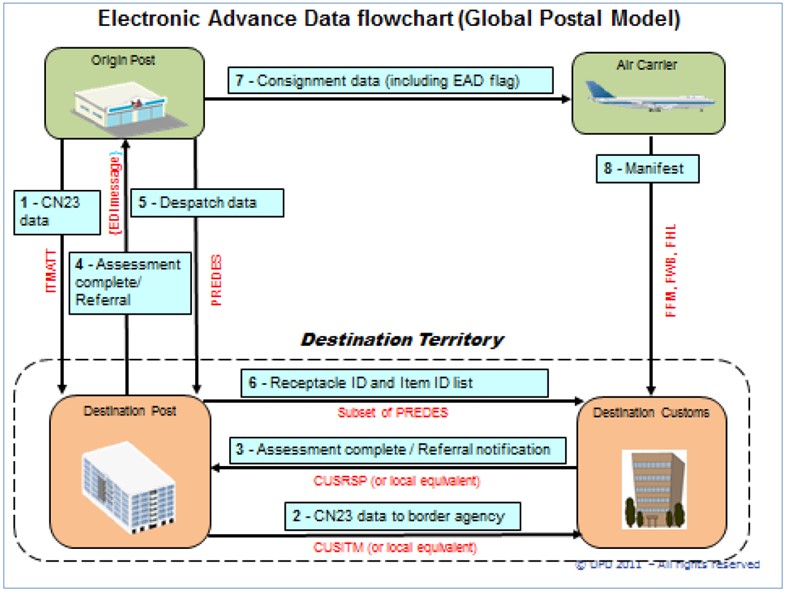
Fig. 3: Electronic advanced data (EAD) is key to facilitating the data-driven, operational application infrastructure of the UPU on behalf of its designated operators
As a single body with a global mandate, it should come as no surprise that the UPU has been able to develop this infrastructure far faster, and in a more focused manner, than if it were a consensus-oriented institution with a more varied group of stakeholders and inhomogeneous decision-making process.
This explains its lead over the EU (Fig.2) in developing the building blocks for a digital global postal network.
Features of the new global postal network
The new postal network for the digital global market is ready for implementation.
- Instead of overlapping products and services, there will be a single category of “postal items” from 0 – 30 KG.
- Instead of differentiating by weight into letters (up to 2 KG) or parcels (up to 30 KG), differentiation will be based on content: “documents” vs. “goods”.
- In place of the current distorting termination fees which are not fit for today’s market conditions, there will be new products, services and related pricing, set by the postal administrations, and starting with a new regime of bilateral and multilateral agreements (not monitored by the International Bureau as set out in Art 8 of the UPU convention).
- Quality of Service-related governance, based on pre-set events and leading to the monitoring of shipments containing goods on an item basis, will be implemented and become mandatory in 2016, and further enhanced by 2018.
- Extending postal item-related information to include electronic identification, enabling postal administrations to become trusted third parties in their respective postal territories, providing proof of identity according to set levels of assurance to enable secured ecommerce, has all been specified and will be implemented in close cooperation with the WCO, IATA and related authorities.
- Extending postal payment services to offer escrow functionalities for cross-border ecommerce, so that individuals who have never met can use posts as trusted intermediaries, have been incorporated into the postal payment transaction platform and connected within the global postal infrastructure facilitated by the UPU.
- Extending individual postal item attributes to include the full digital data representation to cover all necessary security aspects, to pre-advise authorities entitled to inspect (customs) items in the postal territory of final destination, or transport operators (land-, rail-, air- transport, etc.), have been specified in order to be in line with security, customs and related regulations.
- Providing the interface capabilities to connect to item-specific data, based on algorithms and reflecting the preferences of recipients. Including authorisation to add extra services, e.g. to open parcel lockers, parcel stations or engage third parties to drop-off or pick-up items.
Final step: 26th UPU Congress in Istanbul, September 2016
All the technical building blocks are in now place, and the legal framework for the digital global postal network will be agreed by its members at the 26th UPU Congress in Istanbul in September.
This will establish a new digital global postal network for the exchange of postal items in the coming decade, one designed for our modern digital age and the world of ecommerce. The next step is opening access to this global network to the wider postal stakeholders.
- Home ›
- Digital Post Services ›
- Global Postal Network
Does this article cover a topic relevant to your business? Access the CLS Business Lounge for the market intelligence you need to stay ahead of the crowd. Find out more
